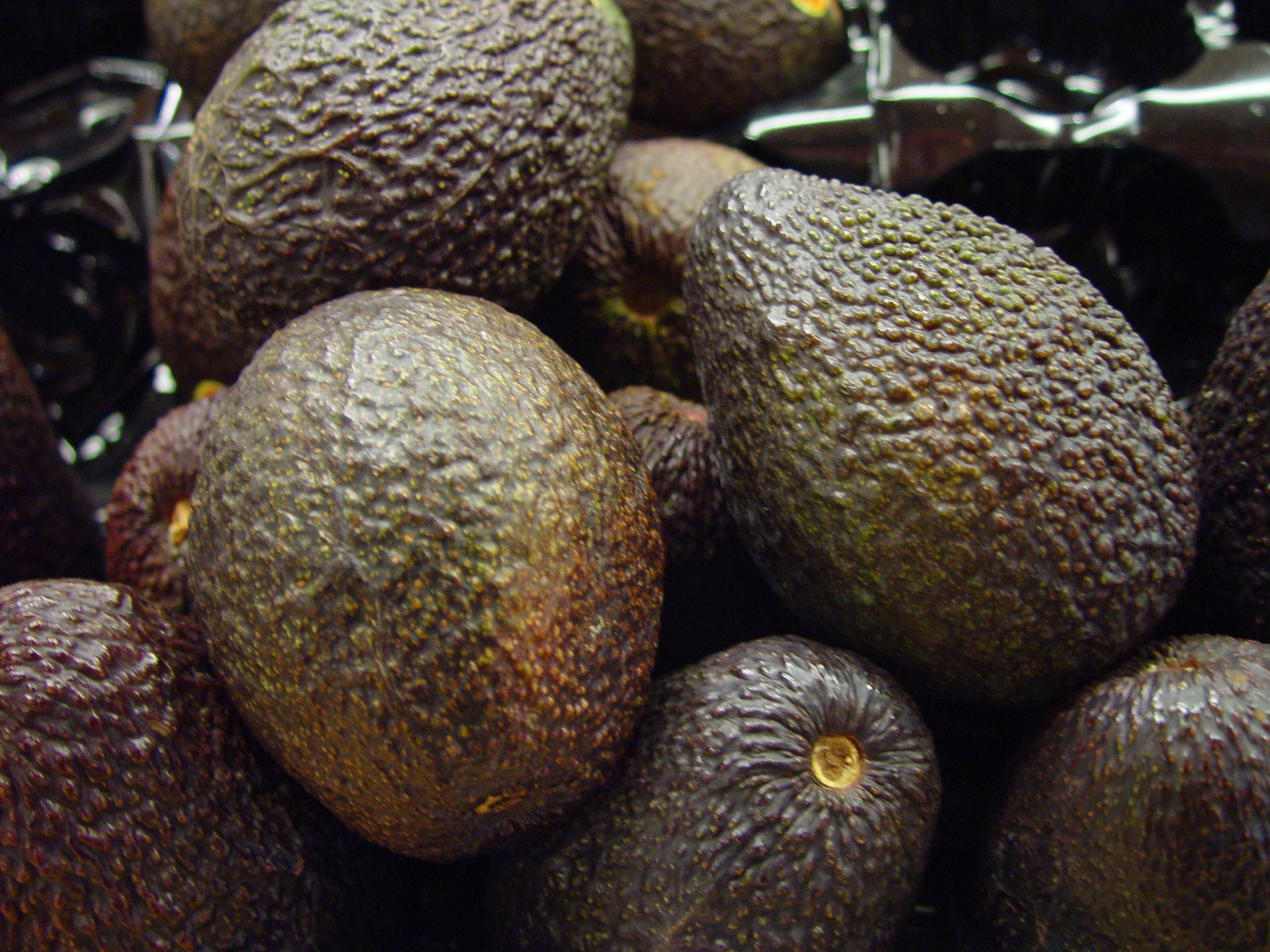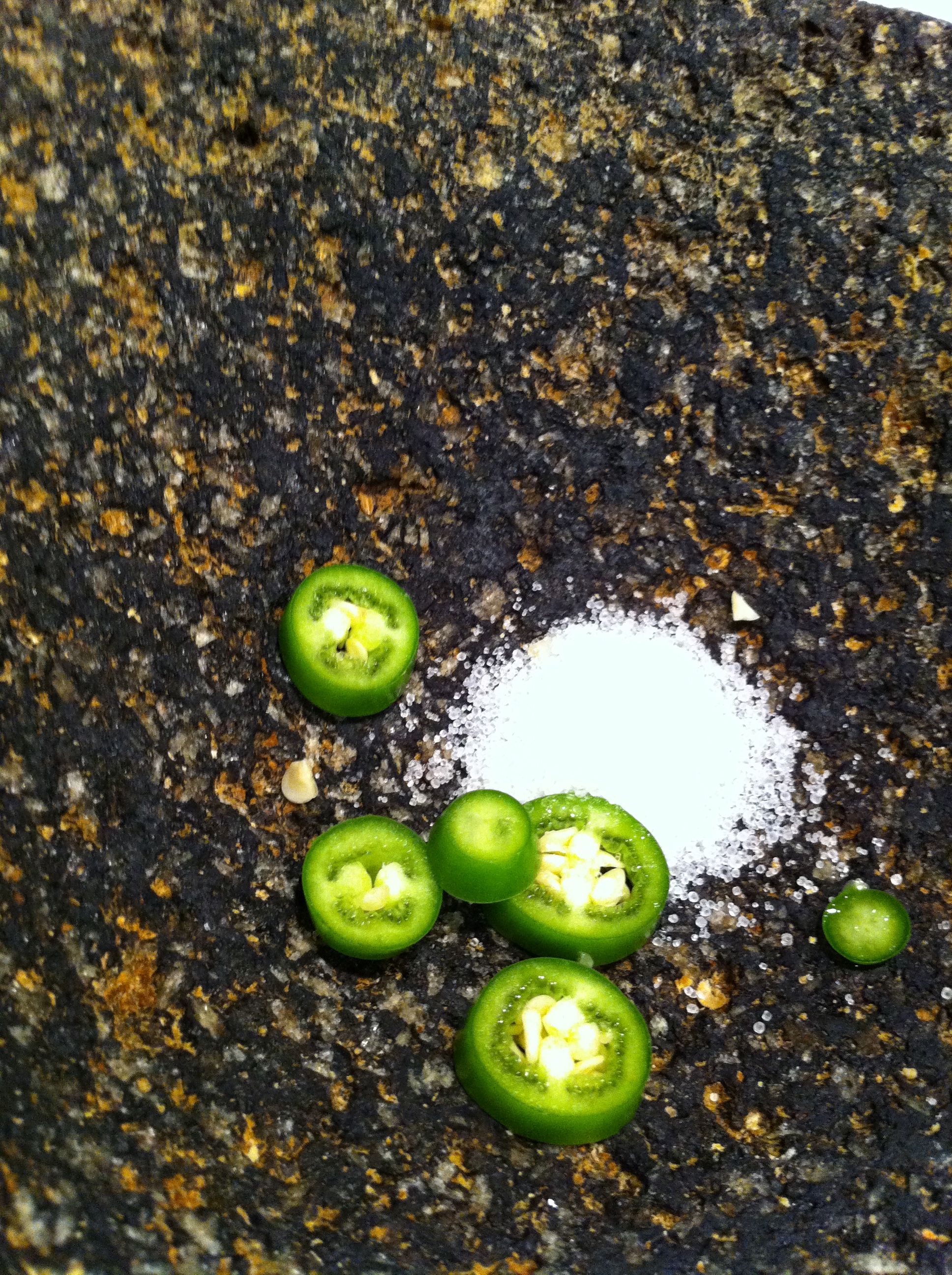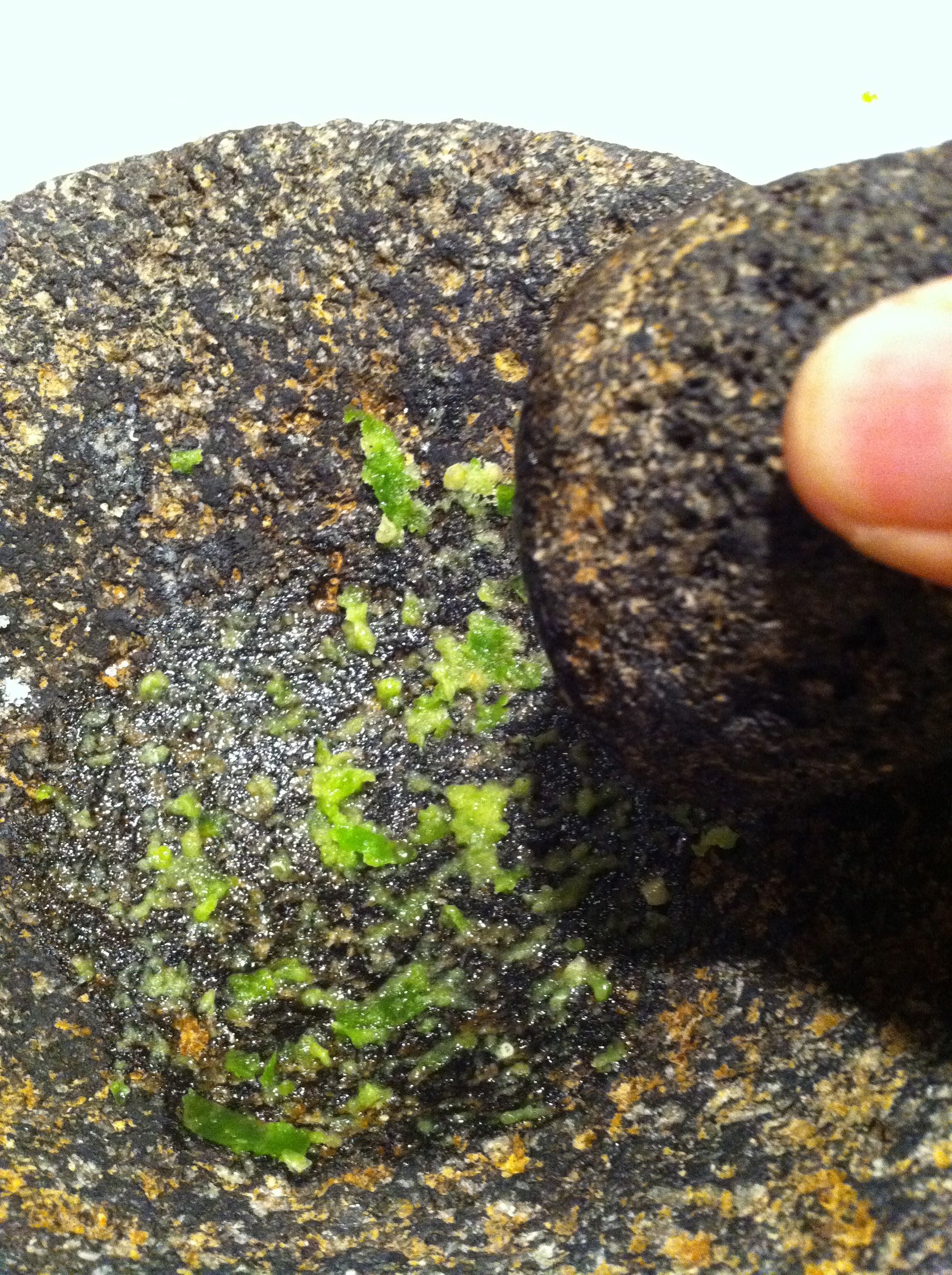Guacamole: from Avocado, from Aguacate, from Aguacatlán
In Texas gaucamole is omnipresent. There are as many recipes are there are bragging-prone machos. 
I myself not being one to brag,, Ahem.., my recipe is based on 3 simple rules.
1. Purchase them Green and Hard.
Rodolfo Fernandez is the top Avocado expert in our region. For many years he provided the best-tasting avocados to Mexican restaurants throughout San Antonio. I follow his advice. At the produce section, purchase Haas aguacates while they are still green and very firm. Store them in a plastic or paper bag and wait two days, maybe three, at which time they’ll begin to ripen and soften. It is then that they are at their peak of flavor. There is no substitute for this direct, natural taste. You’ll say, wow.
2. No Masks.
The fresh, full flavor of the avocado takes nicely to complementary seasonings and accompaniments but be judicious. At all costs do not mask the texture or flavor of the aguacate.
3. Use a Molcajete.
In the recipe below I explain how the foundational flavor is developed in a molcajete.
Avocado is aguacate in Spanish and aguacate is derived from the original Nahuatl name, “Ahucacahuitl.”
The name appears in early writings, MesoAmerican hieroglyphs, documenting that the Avocado is native to Puebla, Mexico.
Here is an original glyph of an avocado tree linked to the place where the tree originates, the town of “Ahuacatlán.” (1) The earliest remains of avocado consumption, 8,000-7,000 BCE, have been found in a cave in what is currently Coxcatlán in the state of Puebla, Mexico.
avocado tree linked to the place where the tree originates, the town of “Ahuacatlán.” (1) The earliest remains of avocado consumption, 8,000-7,000 BCE, have been found in a cave in what is currently Coxcatlán in the state of Puebla, Mexico.
From there the little lush fruit travelled and developed.
There are three botanical types of avocados, Mexican, Guatemalan and Antillean. This map (2) lists where the origins of each of the types may have developed. Notice that the Mexican avocado is within the current Texas Mexican area.
types of avocados, Mexican, Guatemalan and Antillean. This map (2) lists where the origins of each of the types may have developed. Notice that the Mexican avocado is within the current Texas Mexican area.
So enjoy this recipe knowing, again, that for millenia our land has nurtured us with delicious fruits and wonderful cooks. Hmmmmm!
Recipe: serves 6
Ingredients:
2 Haas avocados
1/2 Tbsp Green Serrano chile, sliced
1/2 Tbsp fresh cilantro, finely chopped
1 tspn white onion, small dice
1 tspn salt
1/4 cup tomato, small dice
2 Tbsp white onion, small dice
2 Tbsp fresh cilantro, coarsely chopped
Method:
1. Using a molcajete, make a fine paste of the onion, chile, cilantro and salt. Here is where 

I mentioned that you can develop the flavor direction that your guacamole will take. You may add other seasonings to the molcajete, but keep in mind that you are following many years of tradition. Make sure your variations are culturally relevant, enticing to the palette, and not just vacuously trendy.
2. Dice the avocado and add to the molcajete, scraping and folding to make sure the avocado is covered with the seasonings.
3. Add the remaining tomato, cilantro and onion.
4. Serve immediately with crispy corn tortilla chips.
Guacamole con Frutas (3) Serves 6
Ingredients:
2 Haas avocados
3/4 cup fresh mango, small cubes
10 red seedles grapes, halved
10 green seedless grapes, halved
1/2 cup pomegranate seeds
1/2 Tbsp Green Serrano chile, sliced. Note: I like to add more chile than this because I love the sweet fruit taste with the serrano flavor. But start with this amount and then see if you want to increase the serrano flavor.
1/4 cup tomato, small dice
1 tspn salt
Method:
1. Make the molcajete paste as above, of course there is no cilantro.
2. After combining the avocados with the molcajete paste, fold in the fruits.
3. Adjust the salt. Garnish with additional pomegranate and serve with crispy corn tortilla chips.
Buen provecho, TexMex!
NOTES:
(1) HISTORIA DEL AGUACATE EN MÉXICO, Salvador Sánchez Colín, Pedro Mijares Oviedo, Luis López-López, Alejandro F. Barrientos-Priego.
(2) HISTORIA DEL AGUACATE EN MÉXICO, Salvador Sánchez Colín, Pedro Mijares Oviedo, Luis López-López, Alejandro F. Barrientos-Priego.
I want your recipes
I simply love your blog Adán and feel fortunate to have discovered it. You have such a wealth of knowledge and talent as a chef. It is really a pleasure to learn from someone who has such creativity and passion. Your use of fresh ingredients and the sense of depth and connection with tradition combined with some modern techniques makes for always fascinating reading. It’s a true pleasure to learn from a master (although I know you are too humble to think of yourself as such!)
Hello,Again, El Conde. Could I have the following info about your Tia Elena and you, please:
Your first and last name, Your Tía Elena’s first and last name, so I can give correct attribution. Name of the town where you lived in Texas and the years that you lived there.Name of the city where you live now. Thanks. Adán Just in case you need it, my email is: adan@jmcommunications.com
It would honor us greatly for you to include the casuelitas in your blog. Please feel free to do so. Tia Elena would be so proud!
Oh, my goodness!! Those casuelitas are beautiful! Thanks so much for including the picture. I would like to include your casuelitas in one of my upcoming blog items. Is that ok?
I love them.
Back when I was growing up in south Texas (previous century), my tia Elena would make a dish she called “casuelitas”. She would fashion by hand these little corn masa shells and fill them with her delicious taco meat (know to us as “picadillo”). She would then fry them up in oil and serve them hot. Attached is a composite photo of the casuelitas we make along with a wooden press I made to facilitate making them. We have also adapted the recipe so that we bake the casuelitas in the oven and then fill them with anything we want, including guacamole. We have served these at wine tasting parties and filled them with Texas brisket. But at the end of the evening, no leftovers!
http://www.flickr.com/photos/75223441@N05/6766889809/in/photostream
ok, great. Let me know how it turns out. Remember that you will have to “cure” it again. Take a little bit of white rice and grind it, doing this several times, until the ground rice comes out white. Then it’ll work as good as 50 years ago! I think all of our families keep molcajetes from generation to generation. It’s one of our cultural riches.
Thank you for the tip on how to fix our smooth molcajete. I didn’t want to do anything to it for fear of ruining it. But with your advice, I’ll do it!
Yum! I also use chilpitin sometimes. It’s delicious. And we also had it growing wild in our backyard. Thanks for your comments. Sometimes when the molcajete gets smooth you can take a sharp tool and poke tiny holes in it and it works great.
This is almost exactly the way my Grandparents made guacamole, and ALWAYS in the molcajete. But instead of serrano chile, they’d use the chilpitin chiles which grew wild in the backyard (I use those, too, having brought them from South Texas to California). We also use a molcajete that has been in the family for over 50 years. It is worn smooth but all the flavors I enjoyed in my childhood are still there!